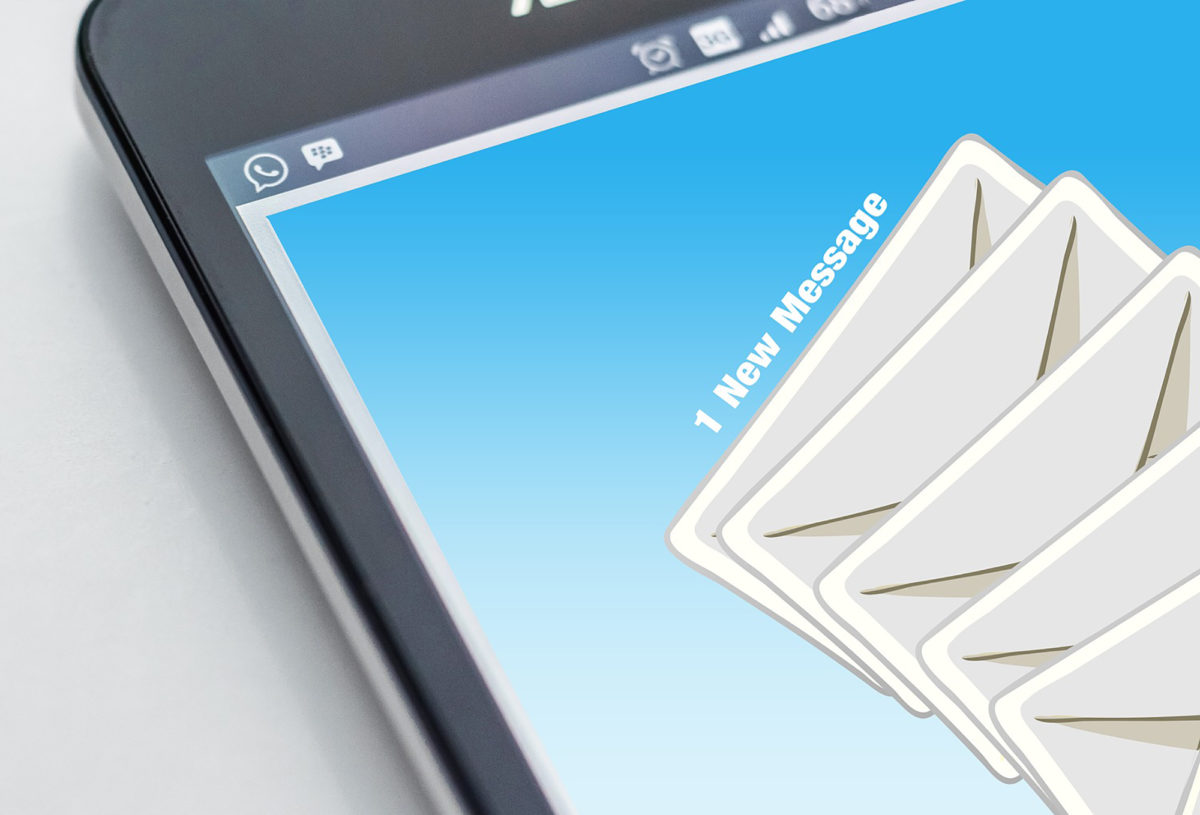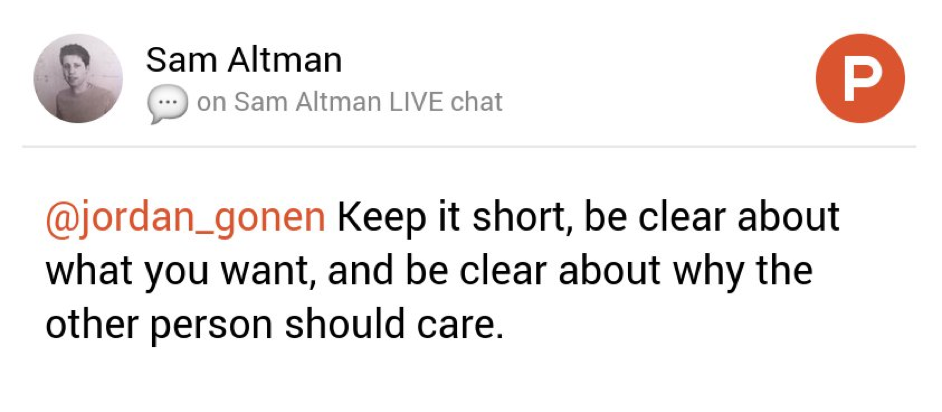Writing the perfect cold email
- November 3, 2017
- By Guest Blogger
- 3 minute read

Email lives at the core of the professional world. Whether you are busy networking or trying to get your product off the ground, chances are you spend a significant amount of your time in your inbox.
I learned early on in my professional career that “being good at email” would actually turn out to pay dividends—and has it ever.
For the sake of making a strong case, cold emails have helped me:
- Get published on Forbes, Fortune, and Business Insider, to name a few
- Gain experience via internships and working at YCombinator-backed tech companies
- Land phone calls with Fortune 500 executives
- Sell products to tens of thousands of customers
Now it does not take a genius to figure out how to be good at email. But when someone like Sam Altman himself hands over a framework during a Product Hunt Live Chat, I thought it would be worth taking the time to look at it.
Here it is:

1. Keep it short
Writing more with less is deceivingly simple. Most people rush writing emails, and tend to use more words than necessary. Speaking with purpose and with a cognizance of the other person’s time is not easy.
Say as much as possible in the least amount of words. People care about their time, so respect that.
Just keep this in mind when writing the email: Make it as easy as possible for the other person to give you their answer.
2. Be clear about what you want
Are you interested in a job? Say so. Do you want to be quoted as a source in an article? Say it—and provide your expertise on the matter in a pithy, engaging way. Do you want a customer to use your product? Say it—and tell them why they should.
Just get to the point!
Most people ignore this advice. They write sentences and sentences without saying anything of substance.
Do not hide your ask in a block of text. Bold it. Highlight it.
No one can help you if they do not know what you want from them.
3. Be clear about why the recipient should care
This one is hard. This is where most people get stumped.
The reality is this part requires you to put your brain aside and start using your heart. Try to empathize with the recipient of your email.
Example 1:
You’re cold-emailing the editor of a major publication. Ask yourself: What is this person looking for?
The answer: The editor wants a unique take on a topic relevant to their audience. They do not want to have to do a lot of work to the contributed piece, so it should not have typos. They also do not want to have to wait a long period of time for answers to any questions they may have.
How is that picture?
Example 2:
You’re cold-emailing a recruiter asking for an internship. Ask yourself: What is this person looking for?
The answer: Recruiters are looking for exceptional, unique talent. Communicate that quickly. Follow up quickly. Make it easy for them to say yes. Do not create more work for them when they have so many other things to be doing.
I think you get the point. As you can tell, this is far from rocket science. The crazy thing is, few people do this. Few people take emailing seriously. Few people follow this framework.
If you do follow it, and are consistent, good things will come. People will respond to your emails. Why? Because people are generally nice. They want to be nice people. They just do not want to have to do more work because of you.
The key to this is empathy. Understand your recipient and you’ll know just how to send them an email.
Contact Us
For assistance in finding faculty experts, please contact Washington University Public Affairs.
Monday–Friday, 8:30 to 5 p.m.
Sara Savat, Senior News Director, Business and Social Sciences
314-935-9615
sara.savat@wustl.edu
Kurt Greenbaum,
Communications Director
314-935-7196
kgreenbaum@wustl.edu
